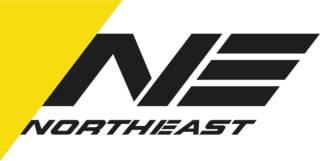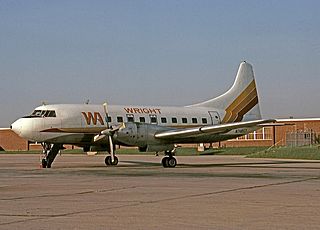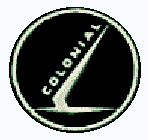
The Federal Aviation Administration (FAA) is a U.S. federal government agency within the U.S. Department of Transportation which regulates civil aviation in the United States and surrounding international waters. Its powers include air traffic control, certification of personnel and aircraft, setting standards for airports, and protection of U.S. assets during the launch or re-entry of commercial space vehicles, powers over neighboring international waters were delegated to the FAA by authority of the International Civil Aviation Organization.

The Airline Deregulation Act is a 1978 United States federal law that deregulated the airline industry in the United States, removing federal control over such areas as fares, routes, and market entry of new airlines. The act gradually phased out and disbanded the Civil Aeronautics Board (CAB), but the regulatory powers of the Federal Aviation Administration (FAA) were not diminished over all aspects of aviation safety.

A regional airline is a general classification of airline which typically operates scheduled passenger air service, using regional aircraft, between communities lacking sufficient demand or infrastructure to attract mainline flights. In North America, most regional airlines are classified as "fee-for-departure" carriers, operating their revenue flights as codeshare services contracted by one or more major airline partners. A number of regional airlines, particularly during the 1960s and 1970s, were classified as commuter airlines in the Official Airline Guide (OAG).
Airline deregulation is the process of removing government-imposed entry and price restrictions on airlines affecting, in particular, the carriers permitted to serve specific routes. In the United States, the term usually applies to the Airline Deregulation Act of 1978. A new form of regulation has been developed to some extent to deal with problems such as the allocation of the limited number of slots available at airports.
The Air Commerce Act of 1926 created an Aeronautic Branch of the United States Department of Commerce. Its functions included testing and licensing of pilots, certification of aircraft and investigation of accidents.
Marquette Airlines was a brief-lived trunk air carrier, a United States scheduled airline that operated between St. Louis to Detroit from 1938 to 1940 before merging into Transcontinental & Western Air (TWA).
Aviation law is the branch of law that concerns flight, air travel, and associated legal and business concerns. Some of its area of concern overlaps that of admiralty law and, in many cases, aviation law is considered a matter of international law due to the nature of air travel. However, the business aspects of airlines and their regulation also fall under aviation law. In the international realm, the International Civil Aviation Organization (ICAO) provides general rules and mediates international concerns to an extent regarding aviation law. The ICAO is a specialized agency of the United Nations.

Northeast Airlines was an American trunk carrier, a scheduled airline based in Boston, Massachusetts that chiefly operated in the northeastern United States, and later to Canada, Florida, the Bahamas, Los Angeles and other cities. It was acquired by and merged into Delta Air Lines in August 1972.

Air New England (ANE) was an American commuter airline with service to New England communities during the 1970s. It was headquartered at Logan International Airport in the East Boston area of Boston, Massachusetts. ANE was noneconomic for most of its existence. From 1975 through its last year, 1981, ANE depended heavily on government subsidies. Depending on the year, these accounted for 17 to 25% of operating revenues, despite which the airline was generally unprofitable.
Aspen Airways was an airline carrier and regional affiliate of United Express and based in Hangar 5 in Stapleton International Airport in Denver, Colorado. Aspen ceased operations on April 1, 1990, when separate portions of the airline were acquired by Mesa Airlines and Air Wisconsin Services, Inc.

Trans Caribbean Airways (TCA) was an irregular air carrier until 1957, when it was certificated by the Civil Aeronautics Board (CAB) as an international air carrier to fly from New York City to San Juan, Puerto Rico. TCA thereafter operated as a small scheduled airline specializing in flying from New York to the Caribbean, adding a small number of additional routes over time until it was purchased by American Airlines in 1971.

On the surface, Wright Air Lines was no different than many other many other small turboprop airlines that collapsed in the early years of the deregulated US airline industry. What set Wright apart was:

Colonial Airlines was a United States trunk carrier, a scheduled airline that operated from 1928 to 1956 with bases at LaGuardia Airport (LGA) in New York City and at Montréal/St-Hubert Airport in Montreal, Canada, before merging into Eastern Air Lines.
Mayflower Airlines was a small United States scheduled airline founded June 22, 1935 that started operations on June 15, 1936 flying from Boston to Cape Cod, Nantucket and Martha's Vineyard on a seasonal basis before World War II. Mayflower operated Stinson Model U Trimotors. The airline applied to be certificated on October 20, 1938 by the Civil Aeronautics Board (CAB) on the basis of operating scheduled service before the Civil Aeronautics Act of 1938. Certification was received by the CAB on July 31, 1940. But Mayflower did not operate after September 1939, although it had CAB approval of such suspension of service. By 1944, Mayflower was bankrupt with all of $300 in cash so in June the CAB permitted the merger of Mayflower into Northeast Airlines.

The Federal Aviation Act of 1958 was an act of the United States Congress, signed by President Dwight D. Eisenhower, that created the Federal Aviation Agency and abolished its predecessor, the Civil Aeronautics Administration (CAA). The act empowered the FAA to oversee and regulate safety in the airline industry and the use of American airspace by both military aircraft and civilian aircraft.

Intrastate airlines in the United States were air carriers operating solely within a single US state and taking other steps to minimize participation in interstate commerce, thus enabling them to escape tight Federal economic airline regulation prior to US airline deregulation in 1979. These intrastate carriers therefore amounted to a small unregulated, or less regulated, sector within what was otherwise then a tightly regulated industry. Geography alone did not determine intrastate status.
The history of non-scheduled airlines in the United States records the rise and fall of a uniquely unencumbered sector of the heavily regulated American airline industry from the end of World War II to the Airline Deregulation Act of 1978. Frequently operating in the shadow of colossal national airlines, which received federal subsidies and flew scheduled passenger service at costly rates, non-scheduled airlines were generally small companies which could be chartered to transport goods or passengers at an hourly or distance-based charge. Non-scheduled airlines were the first to introduce 'aircoach' fares for civilian air travel in the late 1940s, and brought about the low-rate service offered by almost all airlines operating today.
Inland Air Lines was a small trunk carrier, a scheduled United States airline which started as Wyoming Air Service (WAS), founded by Richard Leferink in 1930. In the mid-1930s WAS won airmail contracts for routes in Wyoming, Nebraska, South Dakota and Montana. WAS changed its name to Inland Air Lines in 1938.
Transportation in the United States is governed by laws and regulations of the federal government. The Department of Transportation is responsible for carrying out federal transportation policy, and the Department of Homeland Security is responsible for security in transportation.

Canadian Colonial Airways, Limited ("Limited") was a Canadian airline founded in 1928 in Montreal, Quebec, as a 100%-owned subsidiary of Canadian Colonial Airways, Inc. ("Incorporated"), a United States airline, notwithstanding the name. The two airlines operated joint service between New York City and Montreal.













